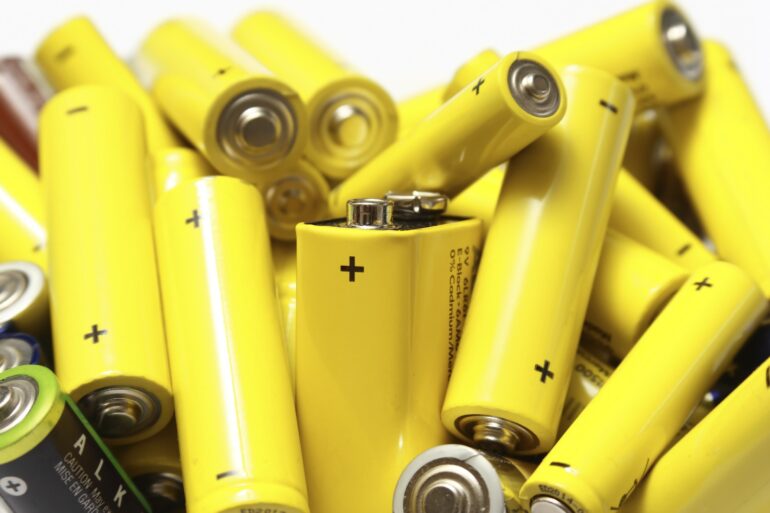Automotive Batteries are an Example of Which Hazardous Class : Exploring the Riskiest Battery Hazards.
Automotive batteries fall under the hazardous class of “class 8 – corrosive substances.” These batteries contain corrosive chemicals that can be harmful to the environment and human health.
They should be handled and disposed of properly to prevent any adverse effects. Automotive batteries are essential components of vehicles, providing the necessary power to start the engine and operate various electrical systems. However, it is crucial to recognize that these batteries are not only powerful energy sources but also hazardous materials.
Classified under “class 8” of hazardous substances, automotive batteries contain corrosive chemicals that can pose risks to both the environment and human well-being. Improper handling and disposal of these batteries can lead to pollution, toxic exposures, and ecological damage. Therefore, it is vital to understand the hazardous nature of automotive batteries and take appropriate measures to ensure their safe management. We will explore the classification, risks, and proper handling of automotive batteries to promote environmental and public safety.

Credit: www.bcg.com
Classification And Analysis Of Battery Hazards
Automotive batteries fall under hazardous class 8, which encompasses corrosive substances. These batteries contain electrolytes that can cause severe burns and damage to the skin and eyes. Risks associated with automotive batteries include acid leaks, short circuits, and thermal runaway.
Identification of hazardous classes helps to ensure proper handling, storage, and disposal of these batteries. In addition, exploring the riskiest battery hazards allows for preventive measures to be put in place. It is crucial to handle automotive batteries with caution and use protective equipment to minimize the potential harm they can cause.
Proper training and awareness of battery hazards are essential for anyone working with or around automotive batteries. Stay safe and be vigilant when dealing with these potentially dangerous power sources.
Chemical Composition Of Automotive Batteries
Automotive batteries, commonly used in vehicles, fall under the hazardous class due to their chemical composition. These batteries consist of various components, each with its own specific purpose. These components include lead plates, sulfuric acid, and electrolyte solution. The lead plates serve as the negative and positive electrodes within the battery, while the sulfuric acid acts as the electrolyte, facilitating the flow of electrons.
The electrolyte solution, typically a mixture of water and sulfuric acid, allows for the ion transfer between the plates. However, these chemicals can pose potential dangers if mishandled or improperly disposed of. The lead in the battery, for instance, can be harmful to both human health and the environment.
Additionally, sulfuric acid can cause severe burns if it comes into contact with the skin or eyes. Hence, it is crucial to understand the hazards associated with automotive batteries and take appropriate precautions when handling or disposing of them.
Safety Measures And Handling Guidelines
Automotive batteries belong to the hazardous class, demanding proper safety measures and handling guidelines. Storage and transportation require compliance with protocols ensuring safe practices. Adhering to guidelines mitigates the risks associated with battery mishandling incidents. Stakeholders must prioritize battery handling safety protocols to prevent accidents and injuries.
Proper disposal and recycling procedures should be followed to minimize environmental harm. Awareness about the potential hazards associated with automotive batteries is crucial. Choosing the right safety measures and handling guidelines ensures the well-being of individuals involved, as well as the environment.
Implementing efficient battery storage and transportation practices is vital to prevent accidents and protect against hazardous situations. By following best practices and protocols, the risks associated with automotive battery handling can be minimized, ensuring a safe and sustainable environment for all.
Conclusion
Automotive batteries fall under the hazardous class of materials due to the presence of toxic substances such as lead, sulfuric acid, and other corrosive chemicals. These compounds pose a threat to both the environment and human health if mishandled or improperly disposed of.
It is crucial to recognize the potential dangers associated with automotive batteries and take the necessary precautions when handling, storing, and disposing of them. Proper battery management is not only a legal requirement but also a responsible approach towards environmental protection.
Recycling automotive batteries is the most sustainable solution as it allows for the recovery and reuse of valuable materials while mitigating the harm caused by hazardous substances. Many countries have implemented programs to encourage battery recycling, making it easier for consumers to dispose of their used batteries safely.
By understanding the hazardous nature of automotive batteries and implementing appropriate measures for their safe handling and disposal, we can ensure the protection of both our environment and ourselves. Let’s all play our part in creating a sustainable future by responsibly managing these hazardous materials.






